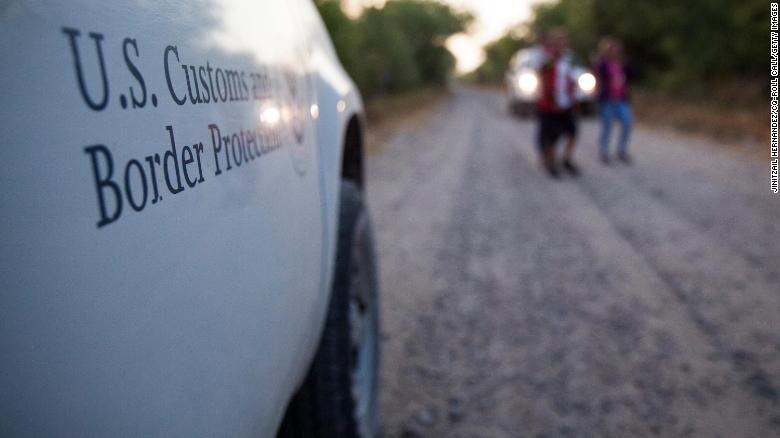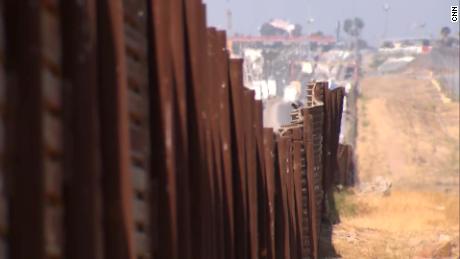Migrant children crossing the US-Mexico border alone are staying in Border Patrol custody for longer than three days on average, overwhelming capacity at border facilities and indicating a crisis taking shape, according to internal documents reviewed by CNN.
The Customs and Border Protection documents dated Tuesday show a growing trend of unaccompanied children coming into US custody at levels beyond the Health and Human Services Department’s ability to house them, given limited shelter capacity due to the coronavirus pandemic.
On average, over the last 21 days the US Border Patrol, part of Customs and Border Protection, arrested around 340 children who crossed the US-Mexico border alone, according to preliminary data outlined in the document. The average time in Border Patrol facilities, which are not designed to hold children, was 77 hours, longer than the 72 permitted under US law.
The strain on capacity is an indicator of the massive challenges facing the department.
In Yuma, Arizona, there were more than 600 people — of all ages — in custody in a space designed for 104, according to the data. And in the Rio Grande Valley, more than 2,000 people were in custody in a space for 715. The numbers can fluctuate daily.
The Biden administration has been reluctant to call the situation unfolding on the US-Mexico border a crisis, instead referring to it as a challenge.
“It is a stressful challenge. That’s why, quite frankly, we’re working as hard as we are, not only in addressing the urgency of the challenge but also in building the capacity to manage it,” Homeland Security Secretary Alejandro Mayorkas said at the White House on Monday.
Growing number of arrests
Customs and Border Protection officials are the first to come in contact with children who cross the US border alone. After being taken into Border Patrol custody, unaccompanied children are turned over to HHS.
During the Trump administration, border officials turned away the vast majority of migrants, including children, returning border crossers to Mexico or their countries of origin, using a public health order related to the pandemic.
While the Biden administration has continued to rely on that policy, it is no longer applying it to unaccompanied children and some families, resulting in more people in custody.
In January, more than 5,800 unaccompanied children and nearly 7,500 families were taken into custody by Customs and Border Protection at the US-Mexico border, according to the agency’s most recent monthly data, up from December. The numbers are expected to increase.
A former Homeland Security official characterized the increasing trend as reminiscent of 2019, when border officials encountered record numbers of unaccompanied migrant children and families, resulting in maxed-out facilities.
“The rate at which people are coming across the borders is exceeding the levels we saw in 2019,” the former official said.
in January 2019, the year where there were surges on the border, the Border Patrol encountered 5,515 unaccompanied children.
“The challenge right now is in addition to limited capacity, you have a Covid umbrella over everything, which restricts the ability of HHS to move people out of custody, with the additional historical issues ORR has had meeting the operational challenge on the border,” the official added, referring to the Office of Refugee Resettlement, the federal agency under HHS tasked with the care of migrant children.
Customs and Border Protection acknowledged the increases in border crossing.
“Numbers of encounters at the border have been rising since April 2020, due to several factors including ongoing violence, insecurity, and famine in the Northern Triangle countries of Central America,” the agency said in a statement to CNN. “As it always has, the number of individuals crossing the border continues to fluctuate and we continue to adapt accordingly. We cannot share the specific number of (unaccompanied minors) encountered, outside of the monthly totals, as they are law enforcement sensitive.”
Limited shelter capacity
To expand capacity to house migrants, CBP opened a “soft-sided” structure in Donna, Texas, and is constructing another in Eagle Pass, Texas. At least four more “soft-sided” facilities are being considered, though locations haven’t been nailed down, according to a senior DHS official. Additional Border Patrol agents are also being deployed to help with processing.
As a result of the pandemic, and precautions to avoid spread of Covid-19, HHS is able to only use a little more than half of the beds it has for children. That means children staying in border facilities that are not intended for their care for longer periods.
“We’re not keeping up,” an HHS official told CNN this week, referring to the department’s capacity to care for unaccompanied migrant children. As of Tuesday, capacity was about 94% full.
The Department of Homeland Security is exploring placing HHS personnel in Border Patrol stations to immediately kick off the placement process and determine whether a child has a relative in the US, Mayorkas said Monday, calling it a “reengineering” of the process.
In a separate effort to speed up vetting of sponsors for children, HHS is working on a data technology system that would update information in real time and connect with the FBI for background checks, shaving hours, if not days, from the process without cutting corners, the HHS official said.
Until a child is released to a sponsor, though, HHS still has to find room to place them in its shelter network.
The agency is adjusting its guidelines, in coordination with the Centers for Disease Control and Prevention, to bring more beds online by loosening some of the precautions put in place earlier in the pandemic. That includes double masking, encouraging staff to get vaccinated, adding more testing, placing kids to allow more than one to a room, and setting up more licensed facilities.
>>>>





